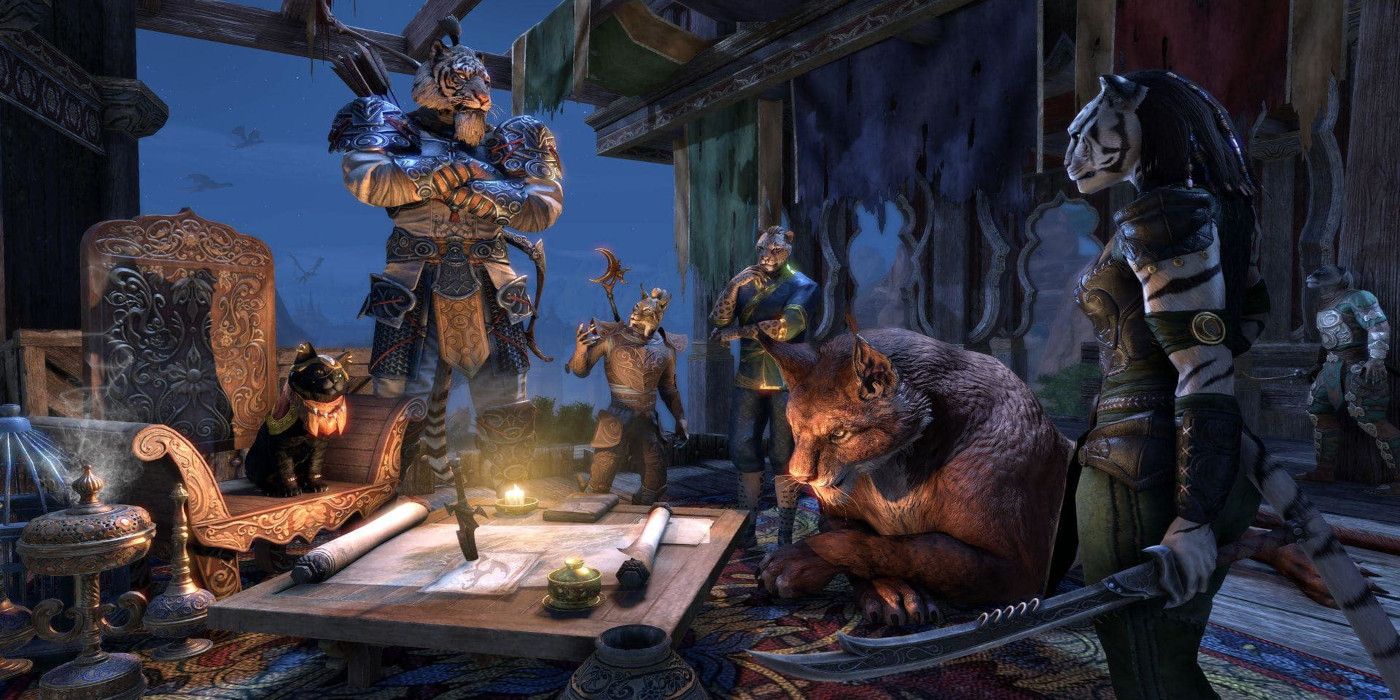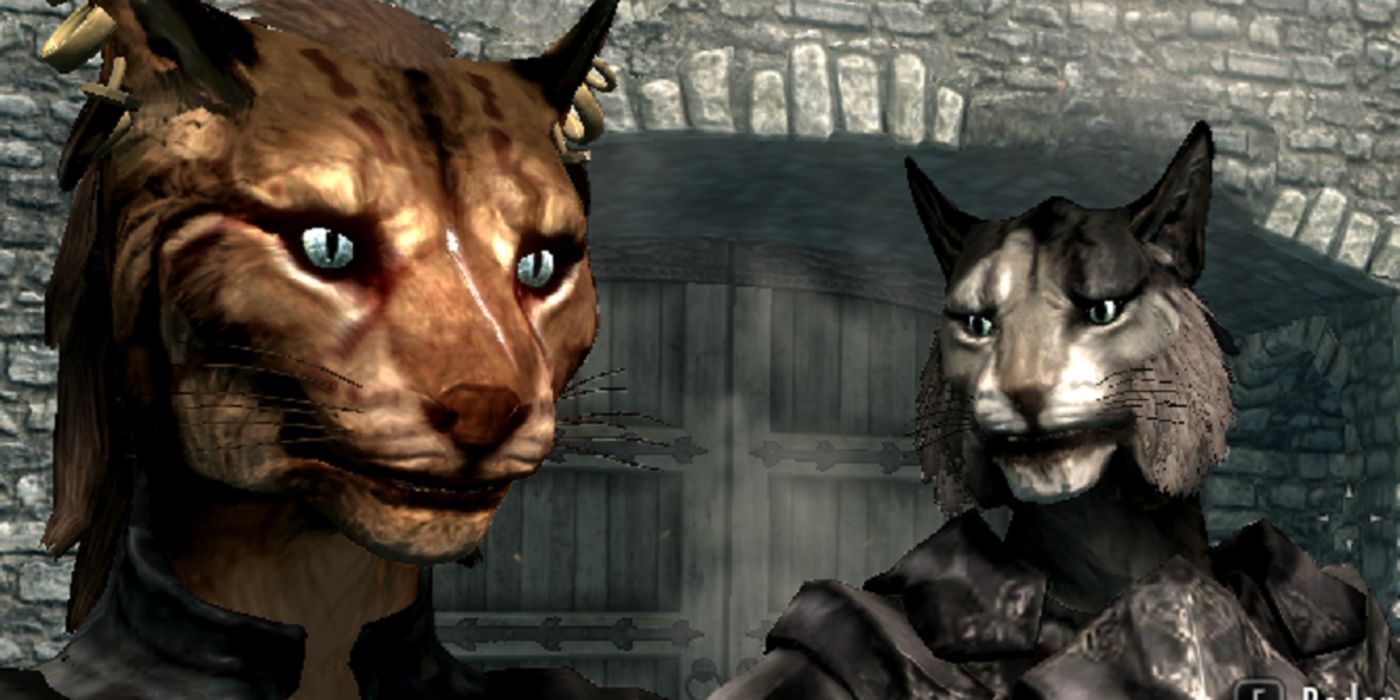The feline Khajiit race has been a mainstay in The Elder Scrolls series since its initial title, Elder Scrolls: Arena. Many fans know them as the furry bipeds from Skyrim with cat faces and tails, but in the series' earliest days they actually closely resembled humans or elves. This evolution is not the result of a change in artstyle, however. In truth, it's an example of the series' unique, intricate lore.
The Khajiit and their homeland of Elswyer are two of the most puzzling topics in the rabbit-hole that is Elder Scrolls lore. Not much is known about them other than they are a race of sapient cat-people who live in the lands south of Cyrodiil, the setting of Elder Scrolls 4: Oblivion. Elswyer is primarily a desert region excluding it's southernmost tip, which is covered in sprawling jungles and where land-owning aristocrats (aristocats) grow Moon Sugar, an ingredient in the country's popular narcotic export, skooma. In the northern dry lands there is a separate society of tribal, nomadic Khajiit. Regardless of their region and society, Khajiit come in a variety of breeds with a shockingly diverse array of appearances. In total, there are seventeen confirmed breeds.
When a Khajiit is born, the breed they grow into is determined by the phase of Elder Scrolls' dual moons, Masser and Secunda. For instance, the larger moon, Masser, influences the size and number of legs a Khajiit has. A full moon creates a large quadruped, a waxing moon creates a large biped, a new moon creates a small biped, and a waning mood creates a small quadruped. Quadrupedal Khajiit can range in size from as big as lions and tigers to the size of an average house cat, and bipedal Khajiit range from slightly smaller than humans to over ten feet tall.
Elder Scrolls: The Difference Between Every Khajiit Breed
The planet's secondary moon, Secunda, is smaller, and therefore its phases have a more muted influence on a Khajiit's appearance. The closer Secunda is to a new moon, the more bestial a Khajiit becomes. When both moons are full it produces a near-hairless Khajiit known as an Ohme which closely resemble Wood Elves in many ways. This resemblance has caused a debate among The Elder Scrolls series' in-universe academics as to whether Khajiit were native to the main continent of Tamriel that serves as the setting, or if they are just another permutation of the ancestral elves who moved there long ago.
It's unclear which exact breed of Khajiit players interact with in most Elder Scrolls games. Barring Elder Scrolls Online, the player usually interacts with only one of a few select breeds. In Elder Scrolls 3: Morrowind, it is confirmed that players meet Suthay-raht, the breed produced by a new Masser and a waning Secunda. In Arena and its sequel Daggerfall, the player interacts with Ohmes and Ohmes-raht respectively, with the only difference being that Secunda is waxing in the latter. In Oblivion and Skyrim, however, players could be interacting with either a Suthay-raht or a Cathay, associated with a waxing Masser and full Secunda.
This only scratches the surface of how Khajiit society functions in relation to its moons. Even Elswyer's leader, the Mane, is a specific breed determined by an extremely rare moon phase. Only one Mane exists at a time, and as a religious and political figure, they are the only Khajiit to receive social privilege as a direct result of their breed. Other breeds seldom appear in any Elder Scrolls game. Picturing these different breeds can be difficult, as many have not had depictions in any piece of official media, but their existence suggests a much larger world for players to explore and for Bethesda Game Studios to flesh out in later games.


